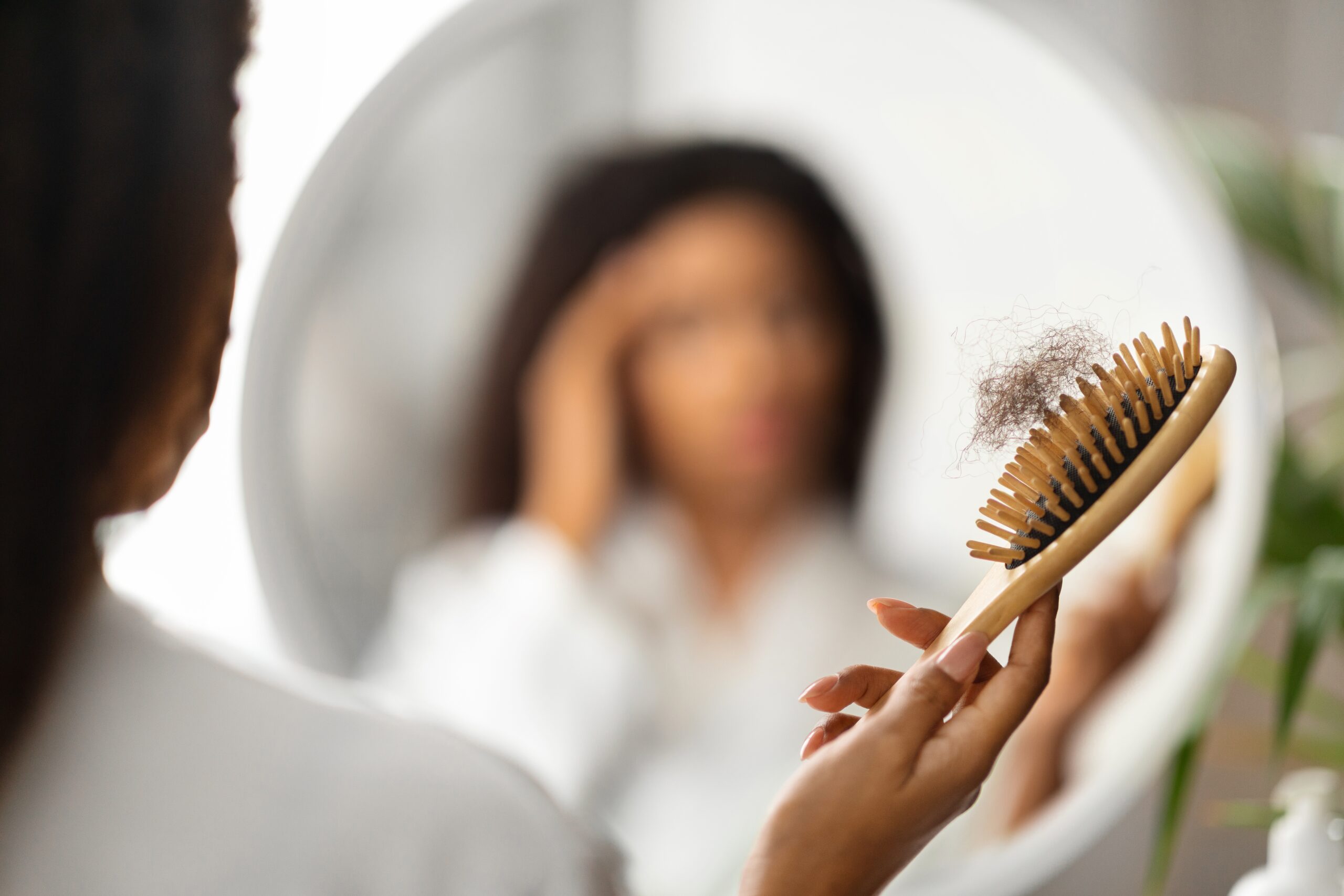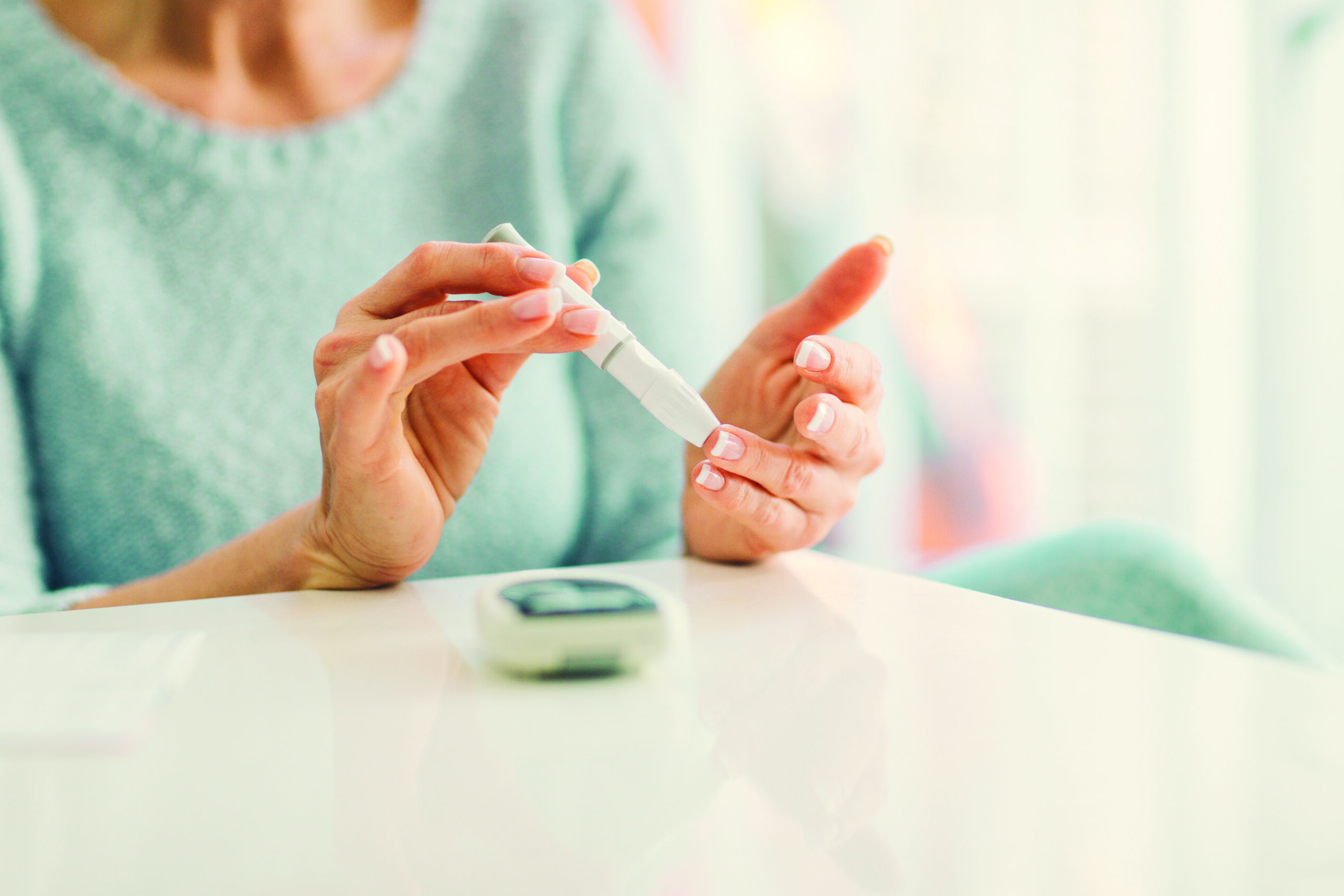by Larry Taylor, Jr.
Member of the Hair Litigation MDL’s Plaintiffs Executive Committee
A Historical Perspective on Hair Straightening
In many cultures, hair is deeply intertwined with identity and cultural practices. The pressure to conform to certain beauty standards often leads individuals to use hair relaxers as a means to achieve a desired look. For instance, within the African American community, using hair relaxers has been a long-standing practice deeply rooted in cultural norms and societal expectations regarding hair texture.
In its natural state, afro-hair texture is characterized by coily, springing, zigzag and s-curve curl patterns, as well as its density, fullness, texture and feel. In colonial times, Americans did not see African or black hair as beautiful. Instead, they described it as “closer to sheep wool than human hair.” Attempting to obtain a better life, many slaves went to extreme lengths to straighten their hair.
In 1786, Louisiana Governor Don Esteban Miro passed the Tignon Law, which required African American women to cover their hair with scarves.
After the abolition of slavery in America, black Americans continued to seek out a better quality of life in society by straightening their hair. In the early 1900s, Garrett Augustus Morgan developed the first chemical hair relaxer. In 1971, Dark and Lovely manufactured the first lye relaxer. The formula consisted of sodium hydroxide, water, petroleum jelly, mineral oils, and emulsifiers.
Biases In Modern Culture
These unhealthy biases persist even today. CROWN surveyed 2,990 women between December 2022 and January 2023. The survey found that African American women’s hair was more than twice as likely to be considered “unprofessional, and ¹∕5 of African American women had been sent home from work at some point due to their hair. Sixty-six percent of African American women have changed their hair to avoid discrimination in a job interview. One-fourth believed they had been passed over for a job opportunity due to their hair.
In addition to passing women with natural hair over for promotions and being less likely to give them references, some workplaces openly ban natural hairstyles, such as braids, twists and locs, in their handbooks and dress codes. Some schools are also guilty of banning natural hairstyles, often disciplining children or even forcing them to miss valuable school time to change their hair. In other cases, while the dress code may not expressly forbid natural hairstyles, administrators are more likely to classify these hairstyles as “distracting.” The New York Times reports cases of children as young as preschoolers being expelled when their guardians refused to change their hair. In one of these cases, a girl was sent home for merely wearing her long hair down.
Another reason African Americans may feel obligated to straighten their hair is because they were bullied for it in school. As adults, they may face microaggressions, such as being asked in-depth questions about their hair, being asked if their hair is real, or others wanting to touch their hair.
Fear of “texturism” or hair discrimination leads African American women to have a lot of anxiety about how to wear their hair. Even Former First Lady Michelle Obama reported to The Washington Post that she kept her hair straight while she was the first lady because Americans “weren’t ready for it.”
In 2019, California passed the CROWN (Create a Respectful and Open Workplace for Natural Hair) Act, which allows those of African descent to wear their hair in its natural state without fear of reprisal. Other states adopted similar laws, including New York, New Jersey, Washington, Maryland, Nevada, Virginia, Colorado, Texas, Massachusetts, Michigan and Illinois. Specifically addressing the prejudices against individuals, particularly of African descent, wearing natural or protective hairstyles in educational and professional settings, the act aims to ensure inclusivity and equality. While some states and cities in the U.S. have implemented or proposed the CROWN Act to prohibit such discrimination, its nationwide application has yet to be achieved. Despite a decline in hair relaxer sales over the past five years, its usage remains prevalent. One 2021 study found a significant 95% of self-identified adult Black women in the United States identified as having used hair relaxers at some point in their lives.
In 2020, the global African American hair care market was estimated at $2.5 billion. The hair relaxer market, which includes hair relaxers, keratin treatments and Brazilian blowouts, was estimated at $718 million in 2021, with the expectation of growth to $854 million annually by 2028.
The Science Behind Hair Relaxers
Early hair relaxer formulations date back to the early 20th century and marked a significant shift from previous methods, such as the use of heated combs and irons, towards more chemical-based solutions for achieving straightened hair. One of the pioneering figures in early hair relaxers was Garrett Augustus Morgan, whose hair straightening cream was discovered accidentally when he tried to find a solution to ease friction on sewing machines in his tailor shop. He began marketing his product after testing the cream on a neighboring dog’s fur.
As chemical relaxers became more prevalent and marketed to a broader audience, the formulations evolved. Earlier relaxers contained potent alkaline ingredients like sodium hydroxide or calcium hydroxide that acted as the active agents in breaking down the disulfide bonds in the hair, which are responsible for the hair’s natural curl pattern. By disrupting these bonds, the hair could be reshaped into a straightened form.
Early relaxers were notorious for their strength and high alkalinity, which could lead to scalp irritation, burns, and hair damage. Application required precise timing and expertise, as leaving the relaxer on for too long could cause severe damage to the hair and scalp. The formulations evolved over time to incorporate different chemicals and pH levels, aiming to reduce the harshness of the relaxers while maintaining their straightening effectiveness. Despite efforts to improve formulations and minimize damage, hair breakage, thinning, and scalp issues occurred frequently.
Hair relaxers have come a long way since those early formulations. Advances in cosmetic science have led to the development of what should be a more refined relaxer formulations that aim to achieve straightening effects while minimizing the harsh impact on hair and scalp health. More modern hair relaxers contain a combination of chemicals, typically sodium hydroxide, guanidine hydroxide, or ammonium thioglycolate, that work by breaking down the protein bonds in hair. This alteration of the hair’s natural structure makes it easier to straighten. While the intended use is for hair, these chemicals can also be absorbed by the scalp and, potentially, into the bloodstream.
Lye Hair Relaxers vs. Lye-free Hair Relaxers
Lye-based relaxers, also known as sodium hydroxide relaxers, are typically stronger and more alkaline. The active ingredient, sodium hydroxide, breaks down the protein structure in the hair, specifically the disulfide bonds. This process is called “relaxing” the hair. By breaking the disulfide bonds, the hair becomes more pliable, allowing it to be straightened.
The relaxer is applied to the hair, usually starting from the roots and working toward the ends. The relaxer is left on for a specific amount of time, as directed by the product instructions, to achieve the desired level of straightening. Afterward, the hair is rinsed thoroughly to remove the relaxer, followed by neutralizing the hair with a neutralizing shampoo or activator. Neutralizers help stabilize the pH of the hair and stop the relaxing process.
No-lye relaxers, also known as calcium hydroxide relaxers or “no mix” relaxers, use calcium hydroxide as the active ingredient. These relaxers have a milder alkaline content compared to lye-based relaxers. No-lye relaxers are typically gentler on the scalp and are often recommended for individuals with sensitive skin or delicate hair.
No-lye relaxers usually come in a two-component system, with a relaxer cream and an activator (liquid or cream). The relaxer cream contains calcium hydroxide, which breaks down the protein bonds in the hair. The activator is added to the relaxer cream just before application to initiate the relaxing process. The steps of application, timing, rinsing, and neutralization are similar to lye-based relaxers.
This alteration of the hair’s natural structure makes it easier to straighten. While the intended use is for hair, these chemicals can also be absorbed by the scalp and, potentially, into the bloodstream.
Chemicals Used In Hair Relaxers:
- DEHP & Other Plasticizers/Phthalates
DEHP, an abbreviation for di(2- ethylhexyl) phthalate, is a manufactured chemical commonly added to plastics to make them flexible. DEHP is found in vinyl upholstery, plastic toys, adhesives, pesticides and food packaging. - Lye (Sodium Hydroxide)
Sodium hydroxide is a highly corrosive base and alkali that decomposes lipids and proteins at ambient temperatures and may cause severe chemical burns. - Guanidine Carbonate
Guanidine Carbonate is a strong chemical base used to produce plastics, explosives, detergents—and hair relaxers. - Succinic Acid
Succinic acid is used primarily as an acidity regulator. - Formaldehyde
In 2011, the U.S. National Toxicology Program described formaldehyde as “known to be a human carcinogen “with long-term exposure. It has previously been linked to nasopharyngeal cancer and leukemia. Formaldehyde is used in resins, paper, plywood, fertilizers, glue and automobile parts. It is also one of the chemicals used to embalm corpses. The U.S. Food and Drug Administration is proposing a rule next April to ban formaldehyde from hair relaxers.
Uterine, Ovarian, and Endometrial Cancers: A Growing Concern
The link between hair relaxers and female reproductive cancers has garnered attention in recent years, prompting concerns among health professionals and consumers alike. While the exact mechanisms are still being studied, evidence suggests that long-term exposure with absorption through the scalp of hormone-disrupting chemicals is a main cause. Depending on the product, a hair relaxer can last between 6 weeks to 6 months. Many women began relaxing their hair between ages 10-13. If the treatment is used regularly, a woman could receive between 34 and 173.3 hair treatments by age 30.
The endocrine system is a complex network of glands and organs in the human body that produces and secretes hormones. These hormones are chemical messengers that regulate various bodily functions and processes, including growth and development, metabolism, sexual function, reproduction, mood regulation, and response to stress.
Many hair relaxers contain endocrine-disrupting chemicals (EDCs) that can interfere with the body’s hormonal balance. Endocrine-disrupting chemicals are substances that can interfere with the normal functioning of the endocrine system. EDCs have been linked to an increased risk of uterine, ovarian and endometrial cancers, which are sensitive to hormonal fluctuations. These chemicals can mimic, block or disrupt the production, release, transport, metabolism or elimination of hormones in the body. They can adversely affect hormone signaling pathways, leading to various health issues and disturbances in development, reproduction, metabolism and other hormonal processes.
EDCs that mimic the effects of estrogen are associated with, among other health issues, breast cancer, uterine cancer, uterine fibroids, endometriosis, and preterm childbirth delivery.
Since the scalp is a highly vascularized area, it is more susceptible to chemical absorption. When hair relaxers are applied, some of the ingredients can penetrate the skin, potentially entering the bloodstream and affecting endocrine and reproductive systems. Regular use of hair relaxers over an extended period can result in prolonged chemical exposure, further increasing the risk of developing these types of cancer.
A landmark study from the National Institutes of Health found women who used hair relaxers were at a higher risk for gynecological cancers compared to women who did not report using these products. The study data includes 33,497 U.S. women ages 35-74 participating in the Sister Study, a study led by the National Institute of Environmental Health Sciences, part of the National Institutes of Health, that seeks to identify risk factors for breast cancer and other health conditions. The women were followed for almost 11 years, and during that time, 378 uterine cancer cases were diagnosed. Women who used hair relaxers more than four times a year and for an extended duration faced a higher risk of these cancers than those who did not.
A study published in 2023 conducted by researchers at Boston University’s Black Women’s Health Study has reported that long-term use of chemical hair relaxers by postmenopausal Black women was associated with an increased risk of uterine cancer. Compared to women who never or rarely used hair relaxers, those who reported using hair relaxers more than twice a year or for more than five years had a greater than 50% increased risk of uterine cancer.
Another study published in the American Journal of Epidemiology revealed that the risk was even higher when hair relaxers were used on a regular basis during early adulthood. The research suggests that exposure to these chemicals during a critical period of reproductive development may have lasting and potentially harmful effects.
An estimated 1.64% of women who never used chemical hair straighteners or relaxers would go on to develop uterine cancer by the age of 70, but for frequent users, that risk more than doubled, increasing to 4.05%.
Legal Recourse For Those Who Have Been Harmed By Hair Relaxers
In October 2022, study results found that women who used chemical hair straightening products were at a higher risk for uterine cancer compared to women who didn’t use the products. Black women were more affected due to their higher and earlier use. This study was conducted for over a decade and was published in the Journal of the National Cancer Institute.
Soon after the study was released, lawsuits began to be filed across the country. As of November 4, 2023, over 7,000 cases were filed. Many plaintiffs have struggled because they do not have receipts to prove which hair relaxers they have used and how often. The Judicial Panel on Multidistrict Litigation centralized all hair relaxer claims in the Northern District of Illinois before Judge Mary M. Rowland in February 2023.
Common defendants in these cases include Revlon, L’Oréal, Godrej SON Holdings, Inc., Strength of Nature, LLC. and Dabur International, Ltd.
Many attorneys are framing their hair relaxer lawsuits as civil rights cases. L’Oreal stated that it aims to manufacture the best products for “for all skin and hair types, all genders, all identities, all cultures, all ages.” The company even went as far as saying that its hair relaxers are part of a “rich heritage and history” for African American entrepreneurs and inventors. However, the master complaint in the court proceeding that consolidated the cases features many advertisements as evidence that defendants targeted African Americans and took advantage of historical biases to sell their products. One L’Oreal ad said look “how beautiful black hair can be.”
Recently, the defendants have asked the court to bifurcate and stay all discovery unrelated to general causation. Bifurcating would split the trial into two parts. For the first part, the court would determine whether or not the defendants knew or should’ve known their product contained cancer-causing chemicals and didn’t warn consumers. For the second part, the court would determine damages. This attempt to bifurcate and stay all discovery continues the defendants’ pattern of attempting to slow the litigation down and prevent the development of trial-ready cases.
The Proof of Claim Form Deadline is currently past, although arguments are being made to extend the deadline and allow late filings.
The Need for Regulation and Awareness
As we examine the historical context of hair straightening and its modern iterations, the emerging evidence linking hair relaxers to female reproductive cancers calls for a closer look at the beauty industry’s practices and regulations. Manufacturers should be required to provide clear and comprehensive ingredient labeling to inform consumers about the potential risks associated with hair relaxers. Consumers should have appropriate information to make informed choices about the products they use.
Additionally, the beauty industry should focus its marketing on safer alternatives to traditional hair relaxers, which can provide similar results without the associated health risks. With the recent FDA proposal to ban formaldehyde and other formaldehyde-releasing chemicals from hair-straightening products in the United States and the large multi-district litigation lawsuit over these products, hopefully, manufacturers will be financially motivated to act.
Finally, an increase in news stories regarding the hair relaxer litigation and other public health campaigns should raise awareness amongst consumers about the potential health risks of hair relaxers, particularly among communities with a high prevalence of use.
The history of hair straightening reveals the enduring human desire for a particular aesthetic, even when it comes at a potential health cost. The connection between hair relaxers and uterine, ovarian and endometrial cancers is a troubling revelation that underscores the importance of research, regulation and education. As we reflect on the evolution of beauty practices, it’s imperative that we prioritize our health and well-being in our pursuit of beauty. The choices we make today will influence the safety and health of generations to come. Beauty shouldn’t kill.








Leave A Comment